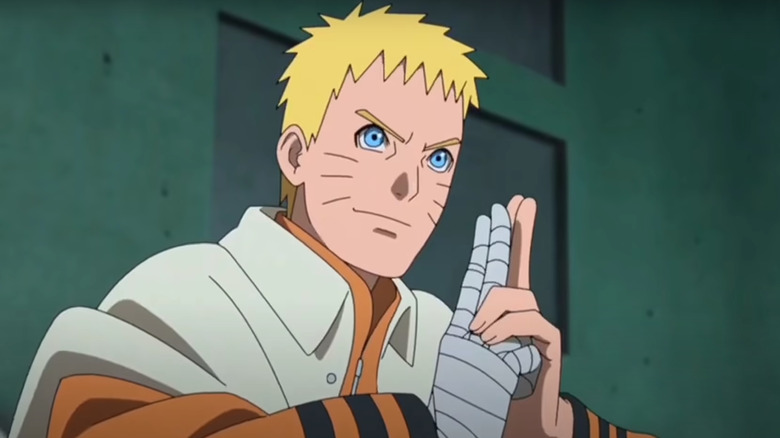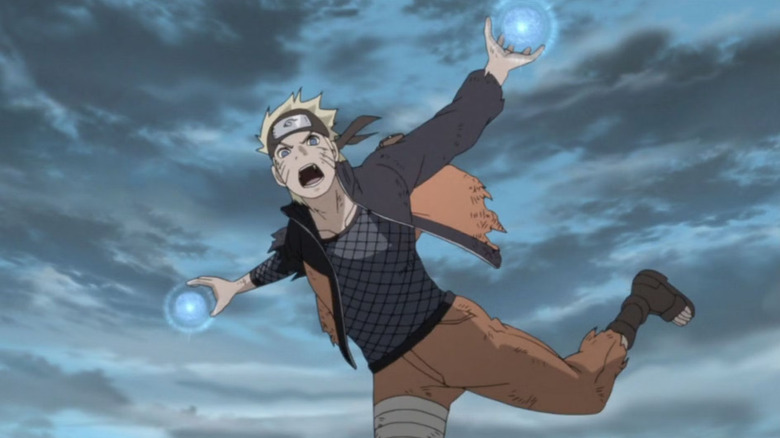Naruto's Gradual Decline In Jutsu Hand Signs Is In Line With Other Anime Series
Throughout the over-700-episode run of "Naruto," the anime depicted everyone's favorite yellow-haired shinobi as he rose from an outcast kid to Hokage of the Hidden Leaf Village. During that time, the series gradually focused less and less on its signature hand signs that many shinobi use to cast their jutsus. While fans may miss the hand symbols, the natural regression in their use symbolizes the typical power progression found in countless shonen anime.
"Dragon Ball Z" includes arguably the most notable example of this jump in power level. When Goku first learns to transform into a Super Saiyan, it takes him minutes of sheer concentration to complete the power-up, turning his hair into the iconic yellow spikes. However, later in the series, he can go Super Saiyan instantly, learning even stronger forms of the powerful transformation.
"Black Clover" is another prime example of this shonen trend. Similar to Goku, Asta's first transformation into Black Asta takes up a few minutes of the anime, as the hero has an entire fight with the demon inside his grimoire before completing the power-up. By the end of the anime, Asta can instantly switch back and forth between his Black Asta form without an issue.
The most surprising aspect of this shonen trend is how natural the progression feels most of the time. Granted, fans sometimes need to watch hundreds of episodes to get to that point, but by the time "Naruto" stops using hand signs, the audience barely even notices they're gone.
Naruto's hand signs are tied directly to a shinobi's skill level
While other anime shows like "Dragon Ball Z" don't offer much of an explanation for characters' insane spikes in power, choosing more of a "Suprise! They can do this now" approach, "Naruto" incorporates it into the shinobis' progression through the ranks.
Earlier in the anime, fans would watch in awe as characters spent upwards of 30 seconds using both hands to cast symbols before unleashing a fight-altering jutsu. During this time, Naruto and his ninja friends rank among the Hidden Leaf's genin and chunins. As they rise within the ranks and many become jonin, although Naruto never gets promoted above genin, their need for hand signs slowly diminishes. Eventually, fan-favorite characters like Sasuke, Minato, and Itachi learn to cast jutsus with a single hand. It's no coincidence that they are all some of the most powerful shinobi in the history of the fictional world of "Naruto."
The titular ninja also reaches this skill level, creating and tossing Rasengans with one hand like it's nothing. To further diminish the need for hand signs, later episodes of the series also introduce pivotal jutsus, like the Rinnegan and Sage Mode, that don't require any hands to activate.
While the hand signs were an iconic part of "Naruto," the anime's extremely natural power progression — until the end of the Fourth Shinobi World War — makes for a compelling story explanation as to why no character uses them.

